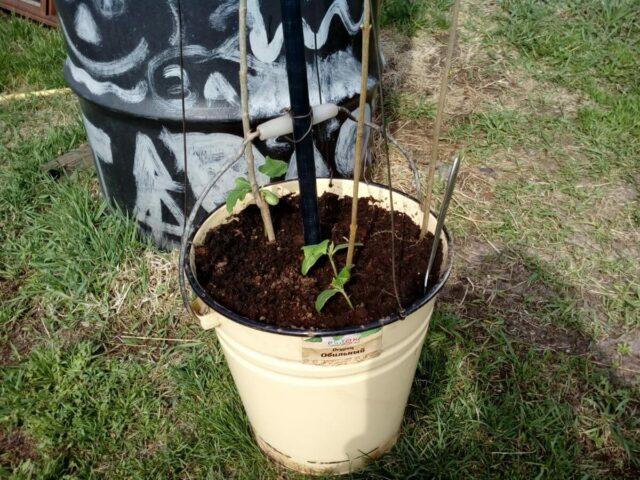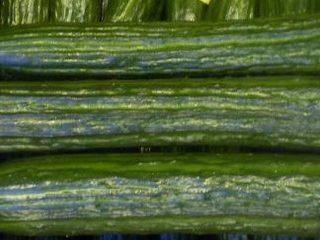Content
Growing cucumbers in a bucket is practiced both in the apartment and in the country. This approach requires less labor. Cucumbers are easier to water and feed, and there is no need to loosen the soil at all. In this case, the harvest will be less due to the minimum area. Although the fruits ripen earlier.
Pros and cons of the method
Growing cucumbers in buckets in open ground and in greenhouses is especially important in cases where there is little space at the dacha. This method of agricultural technology gives gardeners several tangible advantages:
- Caring for cucumbers in buckets is not so difficult (less fertilizer is needed, weeding and loosening is much easier).
- You can use fertile soil and not apply as much fertilizer.
- If necessary, containers can be moved to any place to protect plants from cold weather, temperature changes, and strong winds.
- Cucumbers planted in buckets grow faster compared to those planted in open ground or in a greenhouse.
- The seedlings are evenly illuminated from all sides, which ensures good yield.
- Plants suffer less from diseases and pests.
- Growing cucumbers in buckets is also possible at home: on a balcony, loggia.
- Cucumbers remain clean even during rain (they do not get dirty on the ground).
- You can leave the cucumber vines after harvesting - they will provide good fertilizer for the next season.
There are also disadvantages to this method:
- The most significant disadvantage is that there is less space in a bucket than even in a small garden bed. Therefore, it will not be possible to get a large harvest this way.
- The soil in the bucket is quickly depleted due to natural reasons. Therefore, every year the soil needs to be changed and enriched with fertilizers.
- This growing method requires constant monitoring, so if you rarely visit the dacha, the cucumbers may disappear.
You can grow cucumbers in a bucket outside as an additional source of harvest. In fact, it will not be possible to completely replace the traditional method of cultivation. But in a city apartment, this option remains the only opportunity to get your own harvest.

Growing cucumbers in a bucket is possible both in open ground and in a greenhouse
Which varieties to choose
Only specific varieties are suitable for this method. When planning plantings, it is recommended to pay attention to several criteria:
- Cucumber varieties should be bush or medium-climbing so that the stem does not take up too much space.
- The root system is not too deep. You should choose varieties with fibrous roots (you can check this in the description).
- In a bucket, it is possible to grow only those varieties that are self-pollinating or parthenocarpic. This is especially true for the conditions of a city apartment.
You can choose from the following varieties of cucumbers: Party, Cellar F1, Dasha F1, Stella, Korolek, Aprilsky, Sorvanets F1, Prestige, Moscow Delicacy F1.
Sowing time
When growing cucumbers in barrels, you can do without seedlings. Therefore, the planting date is shifted to the second half of May and even to the beginning of June. In this case, you need to focus on the climatic conditions of the region:
- southern regions - end of April;
- middle zone - mid-May;
- Ural - last days of spring;
- Siberia, Far East – first ten days of June.
If you grow cucumbers in buckets in a city apartment, you can plan planting in April (if the balcony is insulated). Cucumbers do not need additional lighting - in the spring, seedlings develop normally even in sunlight. But if the window is north-facing, you will need to install phytolamps.
How to plant cucumbers in buckets in a greenhouse and outside
You can grow cucumbers in buckets both in a greenhouse and outside. In general, the conditions of care are similar to the standard rules, although there are a few differences. For example, before growing, you need to especially carefully prepare the container and soil.
Selection and preparation of a bucket
For planting cucumbers, it is optimal to choose a standard 10 liter bucket. The minimum permissible volume is 5 liters, but in such a container the seedlings may be cramped, which will reduce the yield. Growing can also be done in barrels, and even an old container without a bottom will do if you do not plan to move it to another place.
The material of the container is not particularly important. Here you need to focus on practicality. Thus, plastic containers are much lighter than metal ones and are not subject to corrosion. It is easier to make the necessary holes in them.

The optimal container in which to grow cucumbers is 10 liters
Before planting, you need to prepare the bucket:
- Rinse thoroughly with water and a 2% solution of potassium permanganate (then rinse with water and air dry).
- Make several drainage holes not only at the bottom, but also on the sides along the entire surface of the container so that the soil and roots do not become waterlogged.
- Place a layer of pebbles, expanded clay and other small stones (at least 5 cm high) on the bottom.
- Determine the location in advance, level the surface, and, if necessary, place bricks so that the container stands level.
Soil preparation
It’s easier to make the soil yourself than to buy it in a store. A fairly large layer of dry leaves, sawdust, and branches is laid on the surface of small stones - they will rot, providing the soil with nutrients and preventing it from becoming too compacted.
As the main mixture, take garden soil and mix it with humus (or compost) in a 2:1 ratio. If the soil contains too much clay, you can also take river sand (1 part). To safely grow cucumbers, the soil is spilled with a weak solution of potassium permanganate or placed in the freezer for several days.
Seed preparation
Before you start growing cucumbers in a bucket, you must first prepare the seeds:
- put in salted water and discard those that float;
- pickle in a weak solution of potassium permanganate or fungicide (if the manufacturer has already done this, then skip this step);
- soak overnight in a solution of a growth stimulator - you can use Zircon, Epin or other means.
When growing, you can do without first obtaining sprouts. It is enough to soak the seeds and start planting within a day.
Sowing cucumbers
To grow cucumbers in a barrel, the soil surface is leveled and a hole 1-2 cm deep is marked. 4-5 seeds are planted at a distance of 5 cm. Then they are sprayed with water from a sprayer and covered with film.

Cucumber shoots appear 10-12 days after planting
Wait for the sprouts to appear, then proceed as follows:
- If all the seeds have sprouted, the seedlings are immediately replanted. An interval of 10 cm is maintained between adjacent specimens.
- If some part has not sprouted, you can plant other seedlings in the bucket so that the sown area is not lost.
Cucumbers are grown at moderately warm temperatures (22-25 degrees). If necessary, buckets are placed in the greenhouse (if there is a threat of return frosts).
Cucumber care
To ensure a harvest of healthy and large cucumbers, as in the photo, when grown in a bucket, you need to take care of all the basic conditions: regular watering and fertilizing. This is easier to do than when growing in the traditional way, since the area is small and in this case there is no need to bend over.

Harvesting in greenhouse conditions can be harvested all year round
Watering
Watering is carried out in “automatic” mode. To do this, place a bottle in the center of the barrel with holes on the sides and bottom. Then you need to pour water into it, which will gradually moisten the soil. Thanks to this, growing cucumbers in a bucket will be much easier.
Top dressing
To get a good harvest, you will need regular fertilizing - up to 3-4 times per season:
- When forming ovaries, use complex fertilizer (according to instructions) or wood ash (100 g per 1 liter).
- After two weeks, they give organic matter - an infusion of cut grass, mullein (1:10) or chicken droppings (1:20).
- After 14 days, you can apply complex fertilizer again.
- After 2-3 weeks, give the same composition or liquid organic matter.
Formation of bushes
To properly grow cucumbers, special attention should be paid to the formation of bushes - they should be compact and take up minimal space. To do this, after 5-6 leaves have formed, a mini-trellis (wooden, plastic or metal) is installed in the bucket. The cucumbers will cling to it with their tendrils, and when the stem reaches the desired height, it is tied to a support.

To fix the bush, install a trellis
To avoid this stage of care, it is better to choose varieties that do not require pinching, for example, Prestige, Detinets, Russian Style, Bouquet and many others.
Possible problems
In general, the technology for growing cucumbers in a bucket is not so complicated, since in this case the plants really require less care. However, summer residents may encounter some problems:
- Due to insufficiently rapid drainage of water, the soil will receive excess moisture, and the roots of the cucumbers will rot. To prevent this, you need to make a lot of drainage holes in the container, including on the sides.
- When grown in a bucket, cucumbers can suffer from diseases and pests. Therefore, preventive treatment with folk remedies and periodic examination are necessary.
- It is extremely important for cucumbers to provide uniform lighting. If you grow them in an apartment, you should choose south and east windows.
- Fertilizers cannot be applied in large quantities, especially if the soil is fertile and organic matter (sawdust, pine needles, leaves) is placed on the bottom. The container has a small volume, so you need to take reduced dosages rather than standard dosages according to the instructions.
- You should not choose barrels that are too heavy if you plan to periodically place them in a greenhouse or other place.
Conclusion
Growing cucumbers in a bucket is a fairly simple technology that is used in cases where there is little space on the plot. Also, growing in a container is suitable as an additional source of harvest. To get rid of unnecessary difficulties, you need to choose a suitable variety - it should be compact and not produce stepsons. You can learn how to grow cucumbers in buckets at the dacha from the video.









GOOD evening. I HAVE 3-4 CUCUMBERS, SOME LEAVES - PART OF THE LEAVES ARE YELLOWED. TELL ME WHAT TO DO. YESTERDAY I WATERED WITH YEAST AND NOTHING CHANGED, PLEASE TELL ME WHAT TO DO
Good afternoon.
Sorry, without a photo and detailed description it is quite difficult to say why cucumber leaves turn yellow. It’s not entirely clear that “cucumbers with 3-4 leaves” are young cucumbers recently planted, or have 3-4 leaves turned yellow? Where do cucumbers grow: in a greenhouse or open ground? Do they bear fruit or not?
As for feeding cucumbers with yeast. Little can change in a day, even if you did everything right. Plants need several days to absorb nutrients.
It is worth noting that at this time yellow leaves on cucumbers are the norm (if these are adult, fruit-bearing plants). If the plants are young, it means they lack nutrients (the soil is poor).
And further. You can feed cucumbers with yeast at the beginning of the growing season. At the end of summer, such fertilizing is not only useless, but can also be harmful. Write what stage of the growing season your cucumbers are at, and we will help you choose what to feed them correctly.